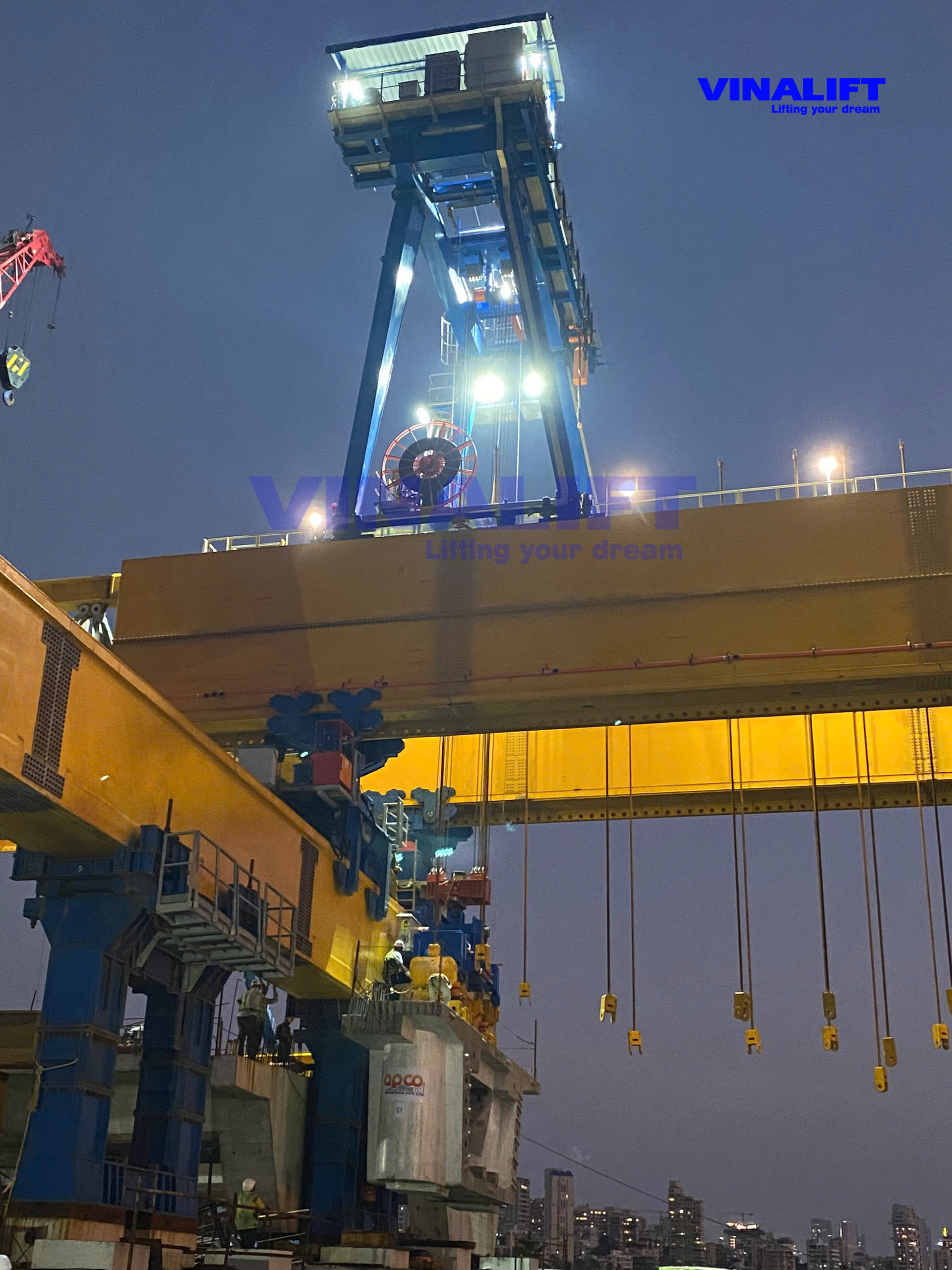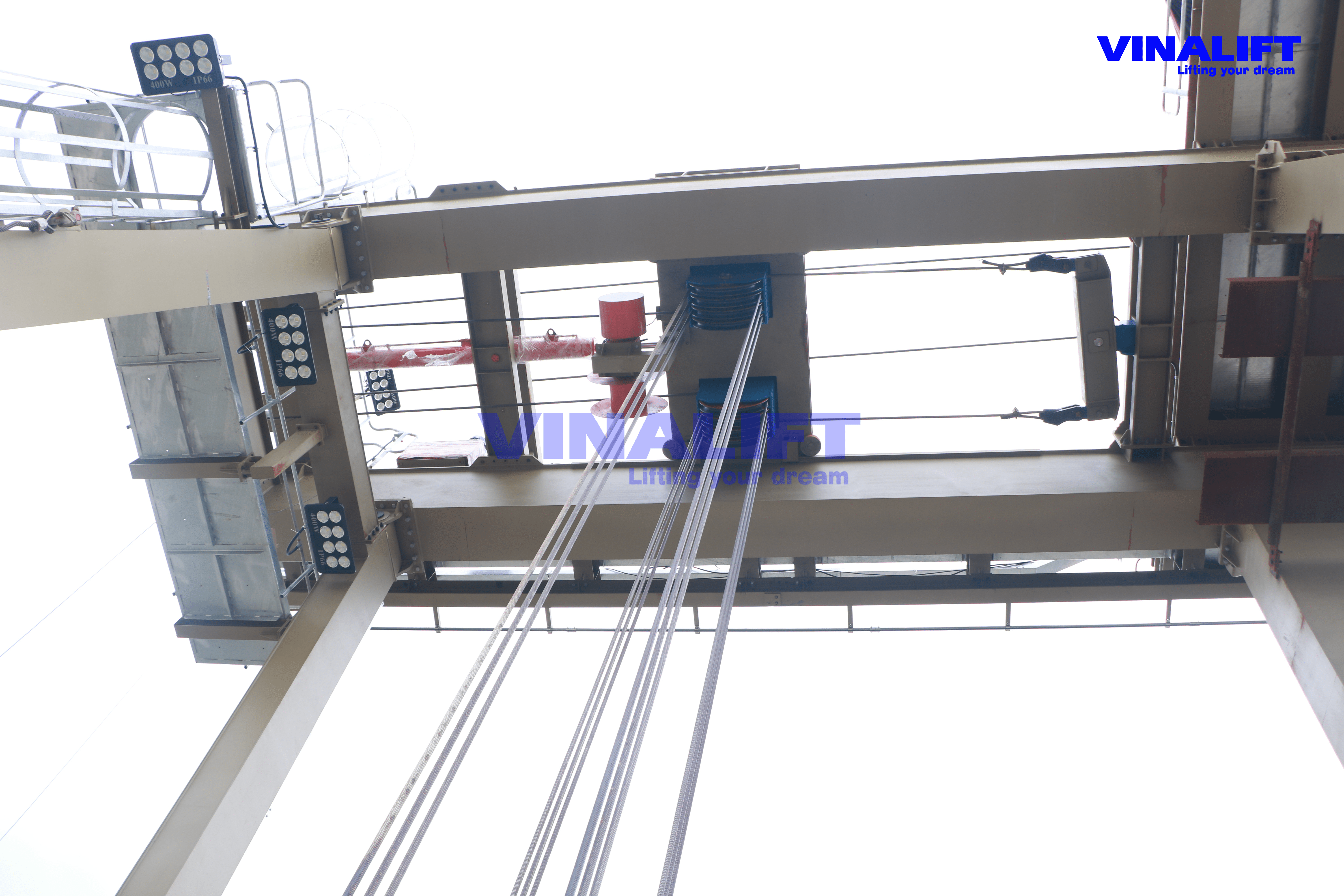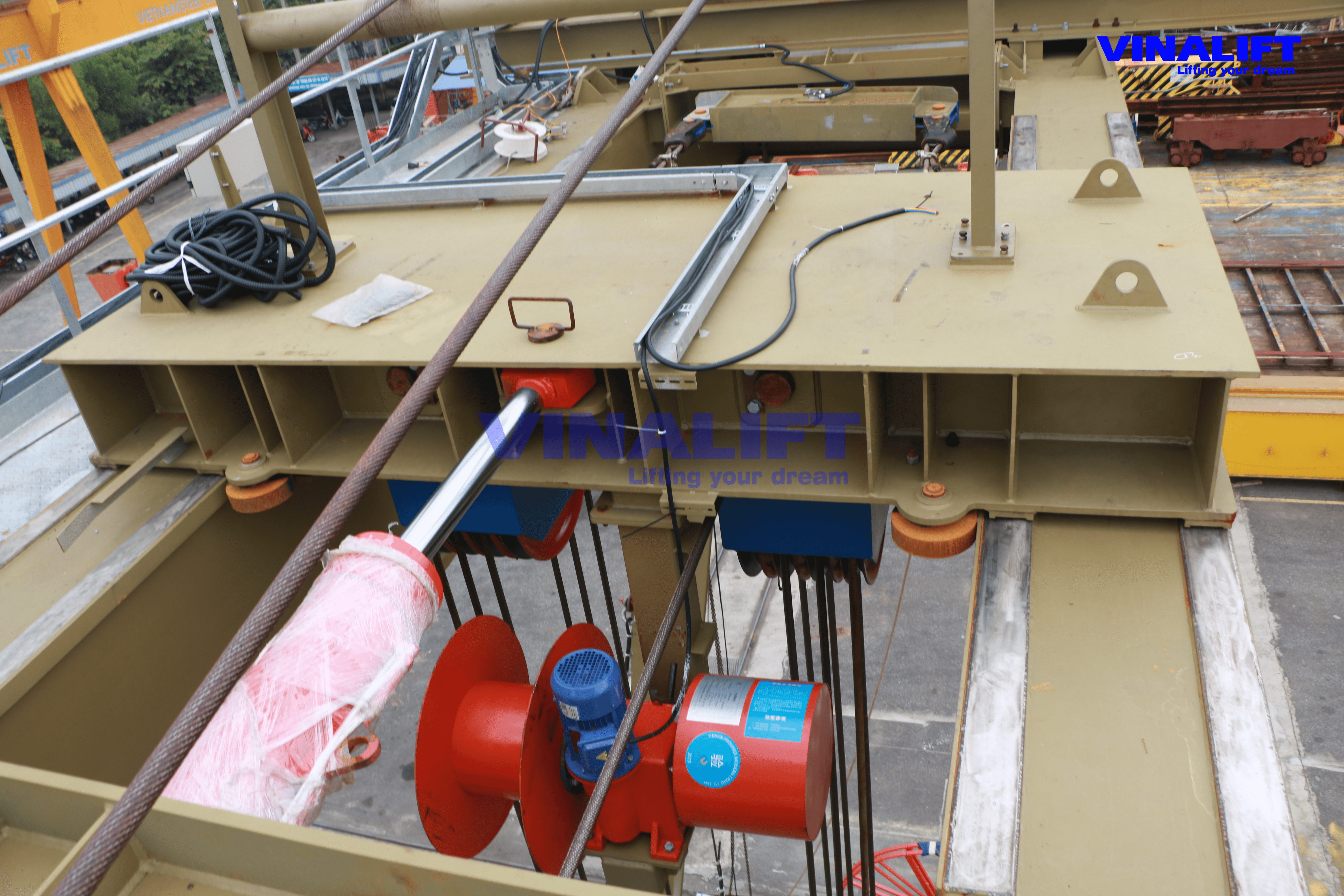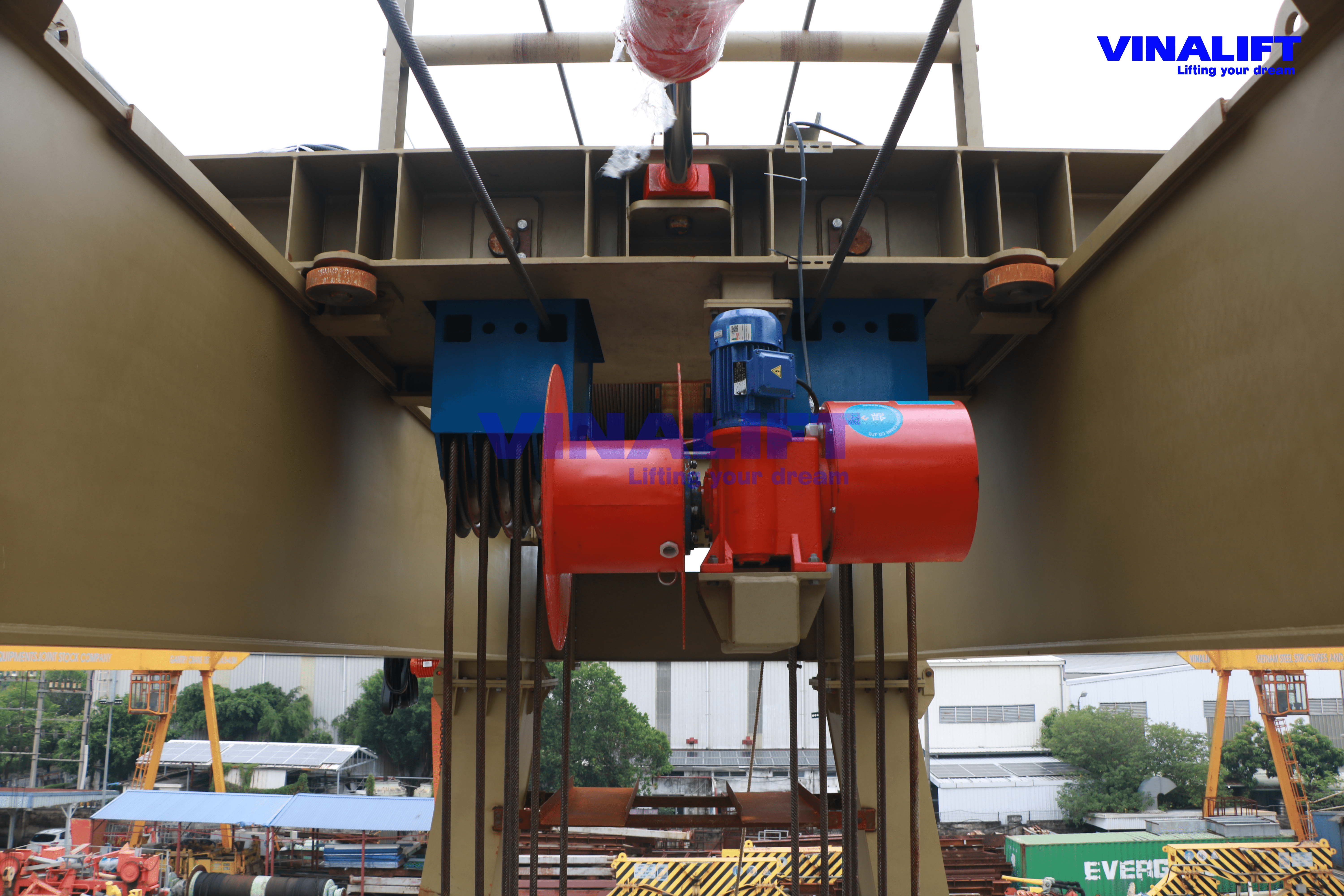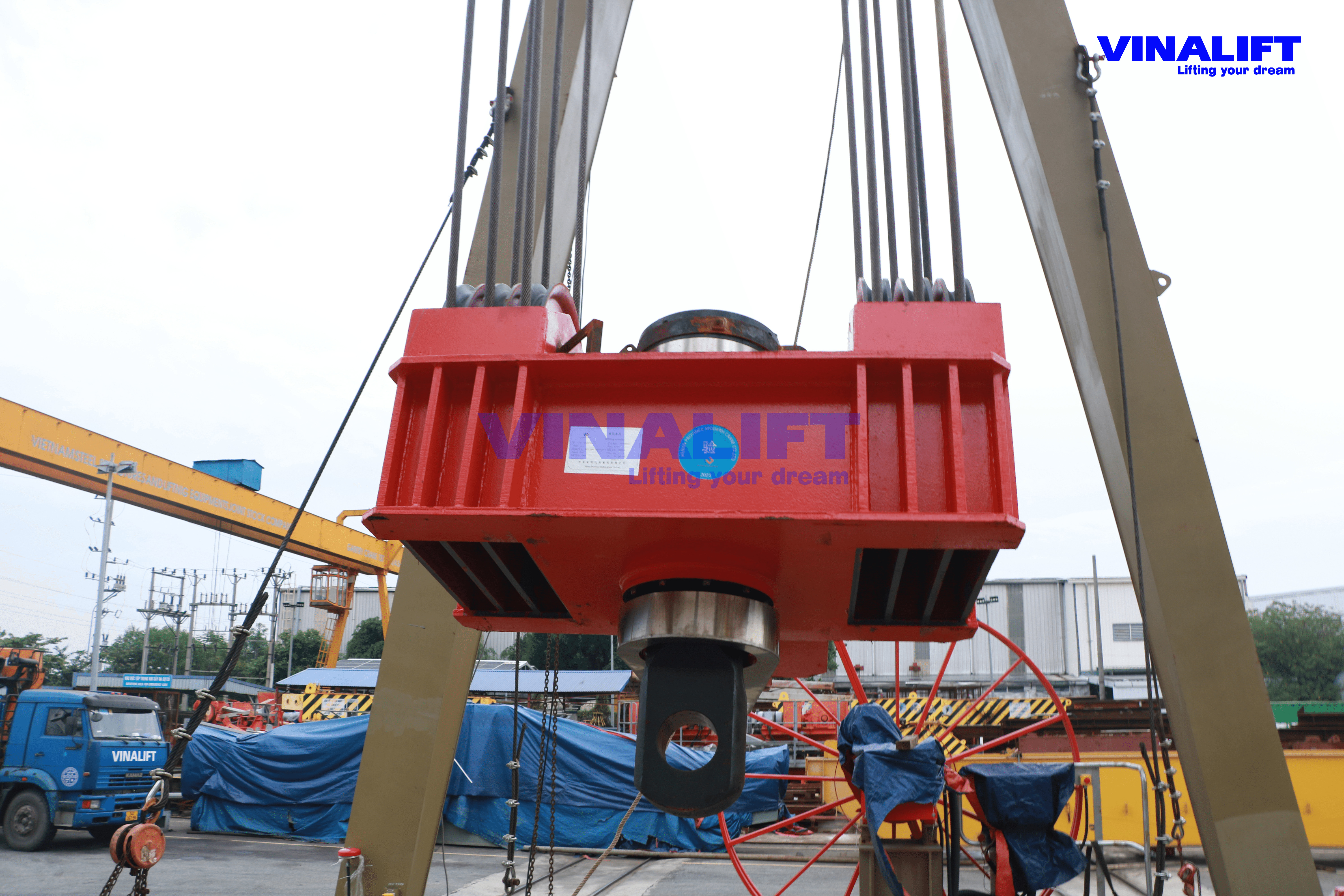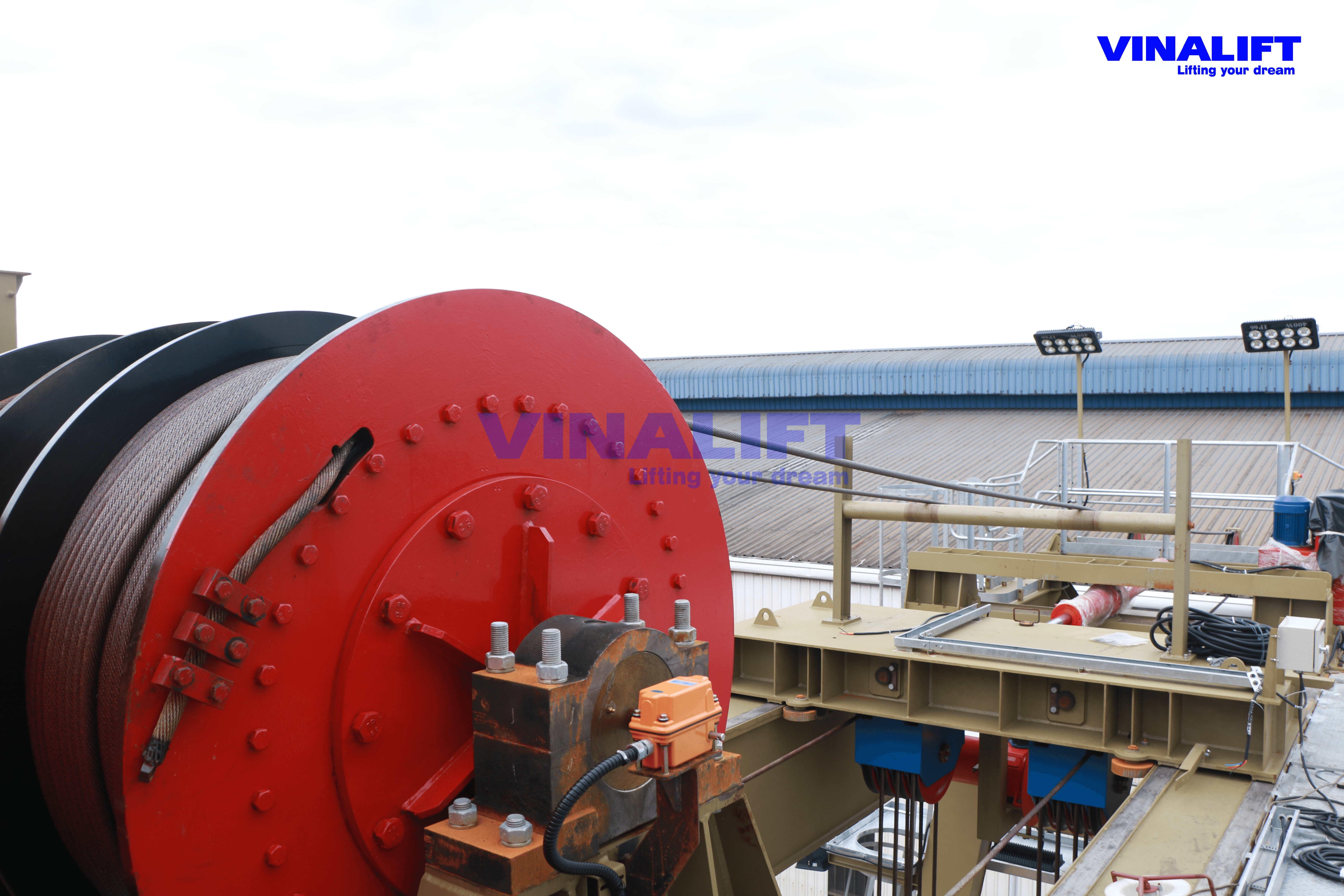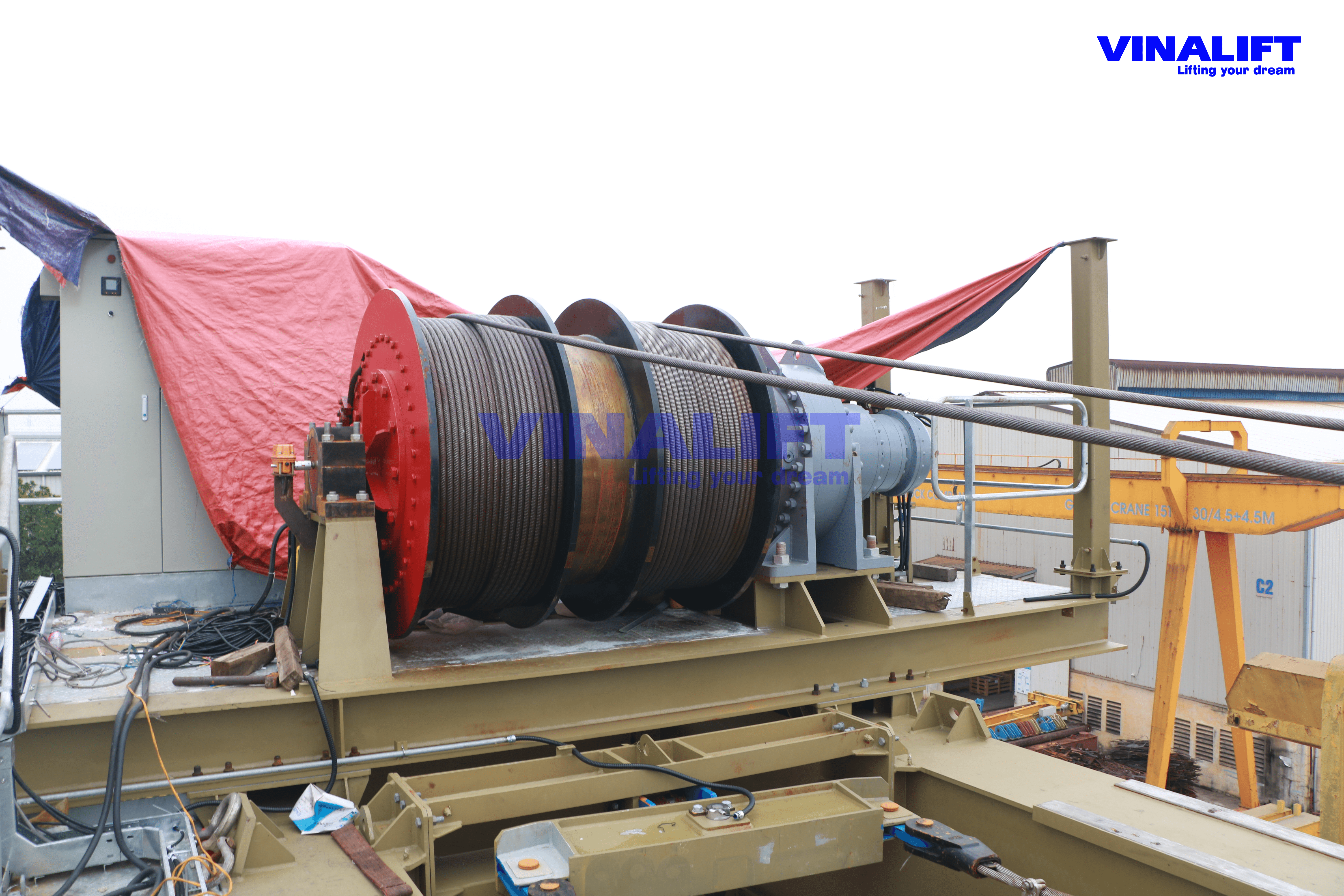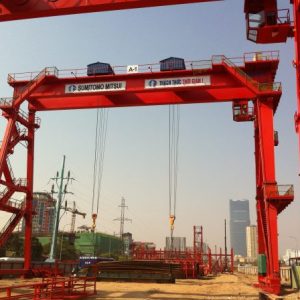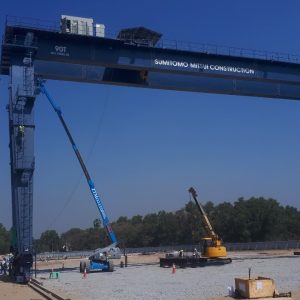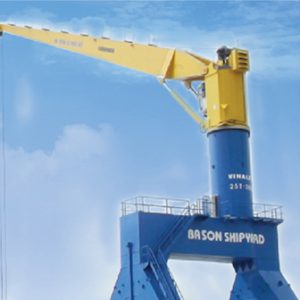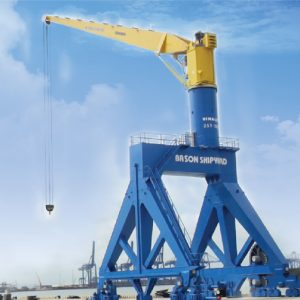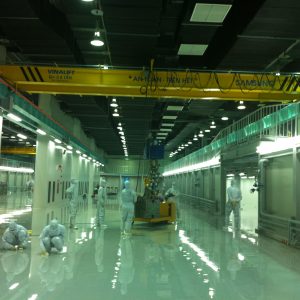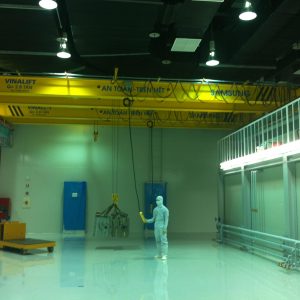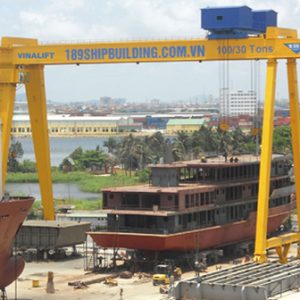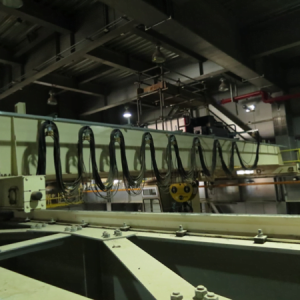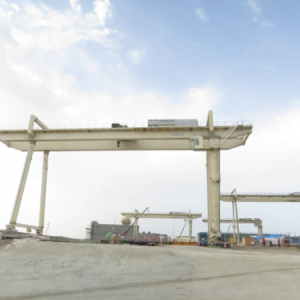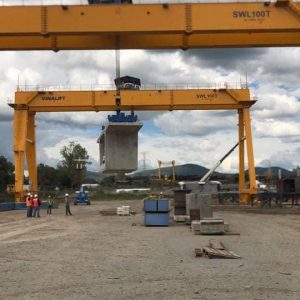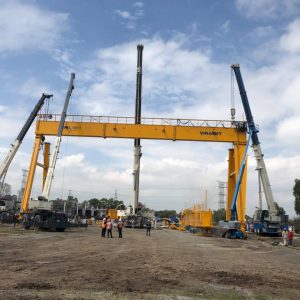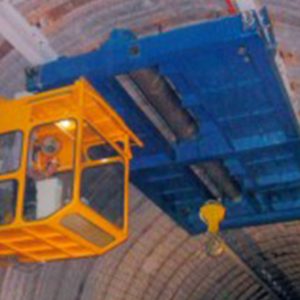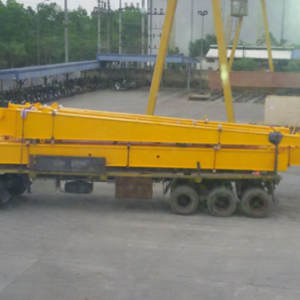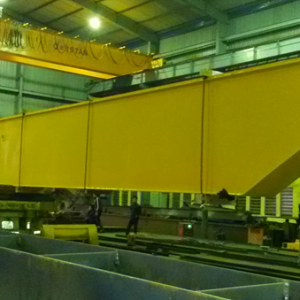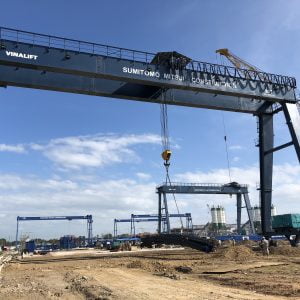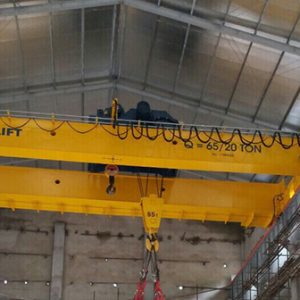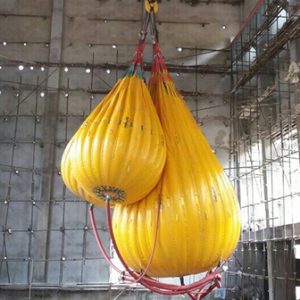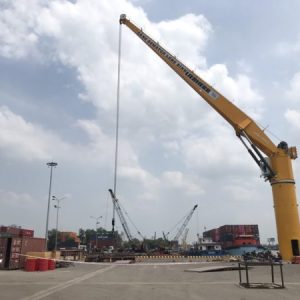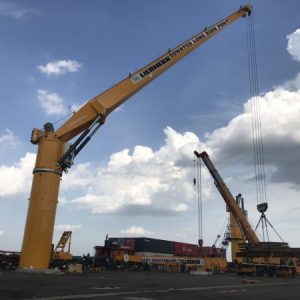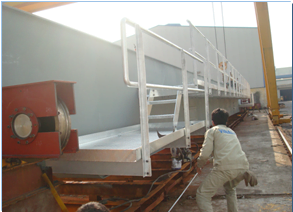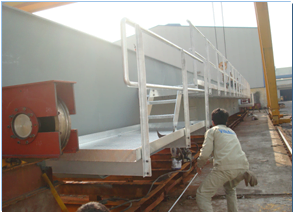VINALIFT supplies the 160-ton gantry crane for the loading bay, this equipment has been used in the VBSL project (Versova–Bandra Sea Link) officially Swatantrya Veer Savarkar Sea Link, is an under-construction bridge in Mumbai, Maharashtra, India as a part of Coastal Road Phase-3 or Western Coastal Road.
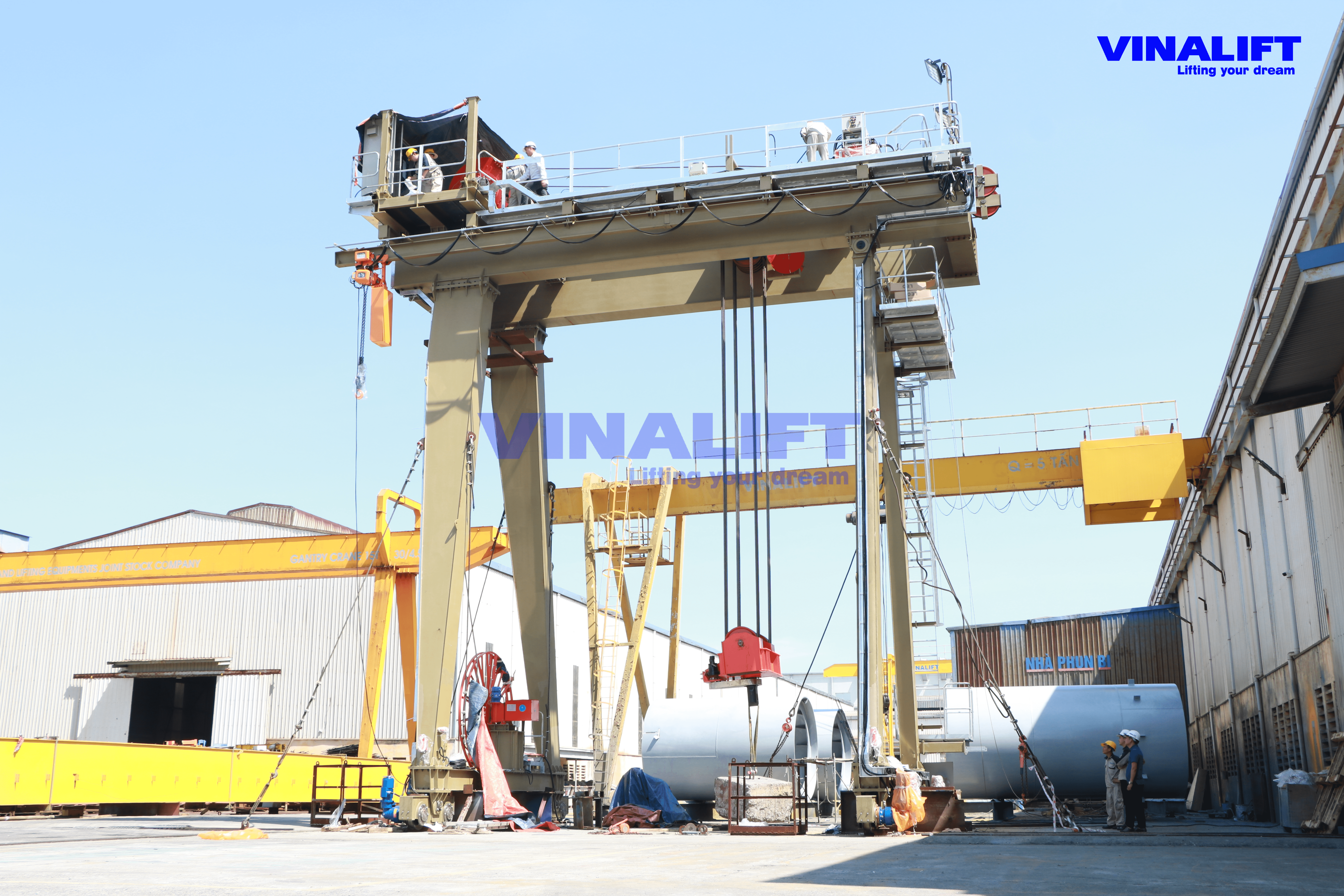
TECHNICAL SPECIFICATION OF 160-TON GANTRY CRANE
General
Winch Gantry Main Lifting capacity (MAIN SWL): Approx 1570 kN at hook block (max 1471 kN segment weight, approx 98 kN spreader beam)
Quantities: 4 gantry cranes
Max Longitudinal slope of the Winch Gantry runways:
- +/-4.0+/-1.0=+/-5.0 %(loaded),
- +/-4.0+/-1.0=+/-5.0 %(unloaded)
- +/-5.0 %(design)
Max Span Transversal slope: 0%
Distance between the centreline of the two main girders: 7640mm (fixed distance)
Winch Gantry rails: 70×40 (height), material Q460C or equipment minimum breakage 550 MPa, positioned on each girder C/L
Winch Gantry span: 7640mm (fixed distance)
Main Winch upper pulley block side adjustment: ±1100 concerning the centered position of the upper pulley block
Path of the Winch Gantry over main girders: Approx 133m (approx 141,0m bumper to bumper distance)
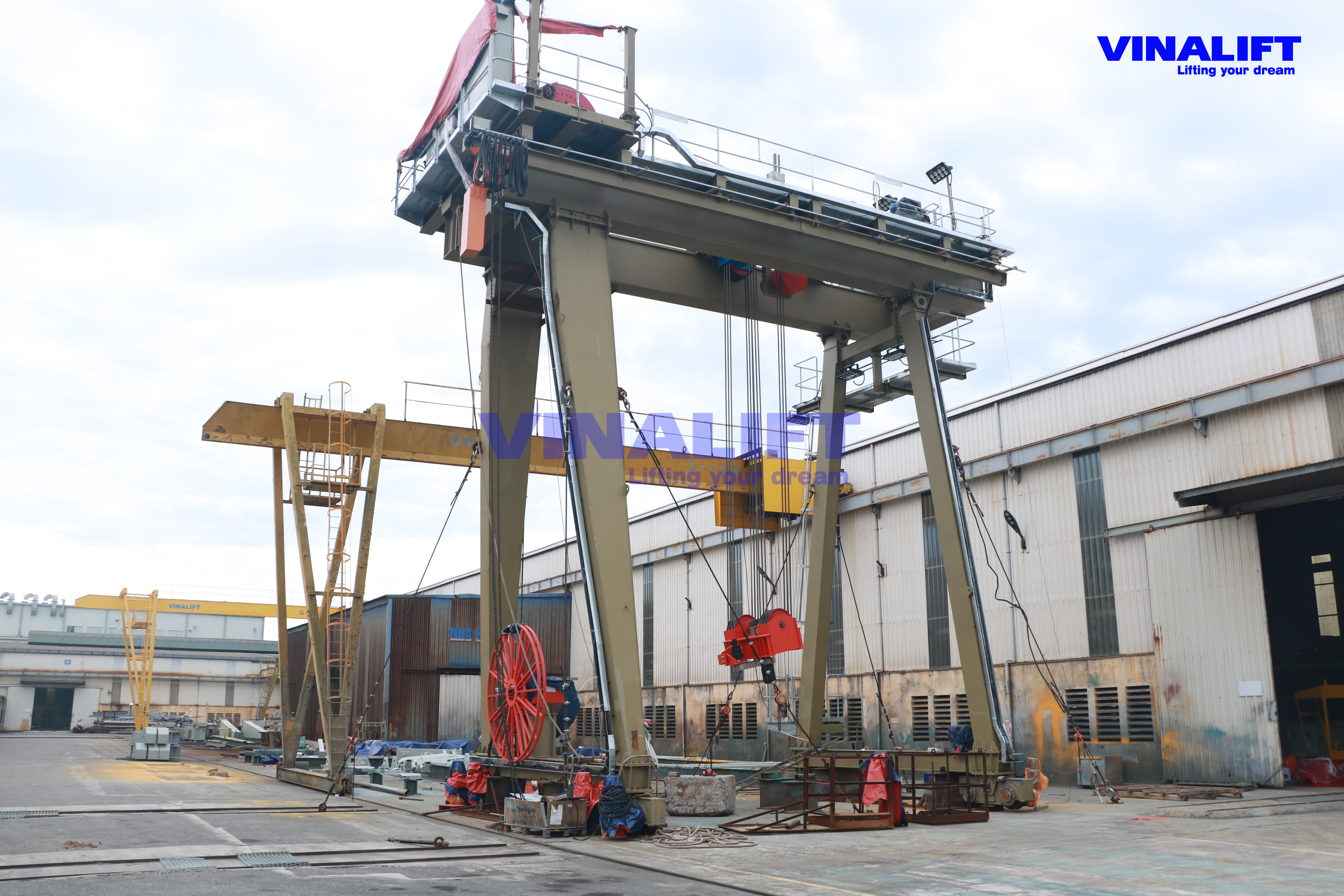
Main Lifting speed:
- 0 m/min ÷1,5 m/min (loaded)
- 0 m/min ÷3,0 m/min (unloaded)
Main Lifting stroke: approx 47m
Winch Gantry traveling speed (longitudinally along LG):
- 0 m/min ÷4,0 m/min (loaded)
- 0 m/min ÷8,0 m/min (unloaded)
Winch Gantry Auxiliary Lifting capacity (AUX SWL): 50 kN (at hook)
Auxiliary Lifting speed: 0,6 m/min
Auxiliary Lifting stroke: Approx 22 m (approx 12m under WG top of rail)
Auxiliary Lifting type: Chain hoist, installed on Winch Gantry on delicate monorail beam
Auxiliary hoist class: A2 for structure/1 Am (M4) for mechanisms according to FEM std
Auxiliary Hoist traversing speed (transversely to LG along monorail beam):
- 4,0 m/min (low speed)
- 24,0 m/min (nominal speed)
Truss traveling speed (on a maximum slope): 0,25 m/min ÷ 2,5 m/min
Max weight of the winch gantry (to be optimized): 55 tons (including hook block)
Weight of the spreader beam: 10 tons (included in SWL)
Max weight of the service hoist: included on winch gantry self-weight
Free room under main girder (and hydraulic cylinder for span setting): 10.5 m from top of rail (to alow hanging bars lifting at up level)
Winch Gantry accesses: Main entry from LG top of girder, through dismountable ladder; entrance chain locked when not in use; telescopic ladder to descend on rear/front heads (head height 4.6m)
Design codes
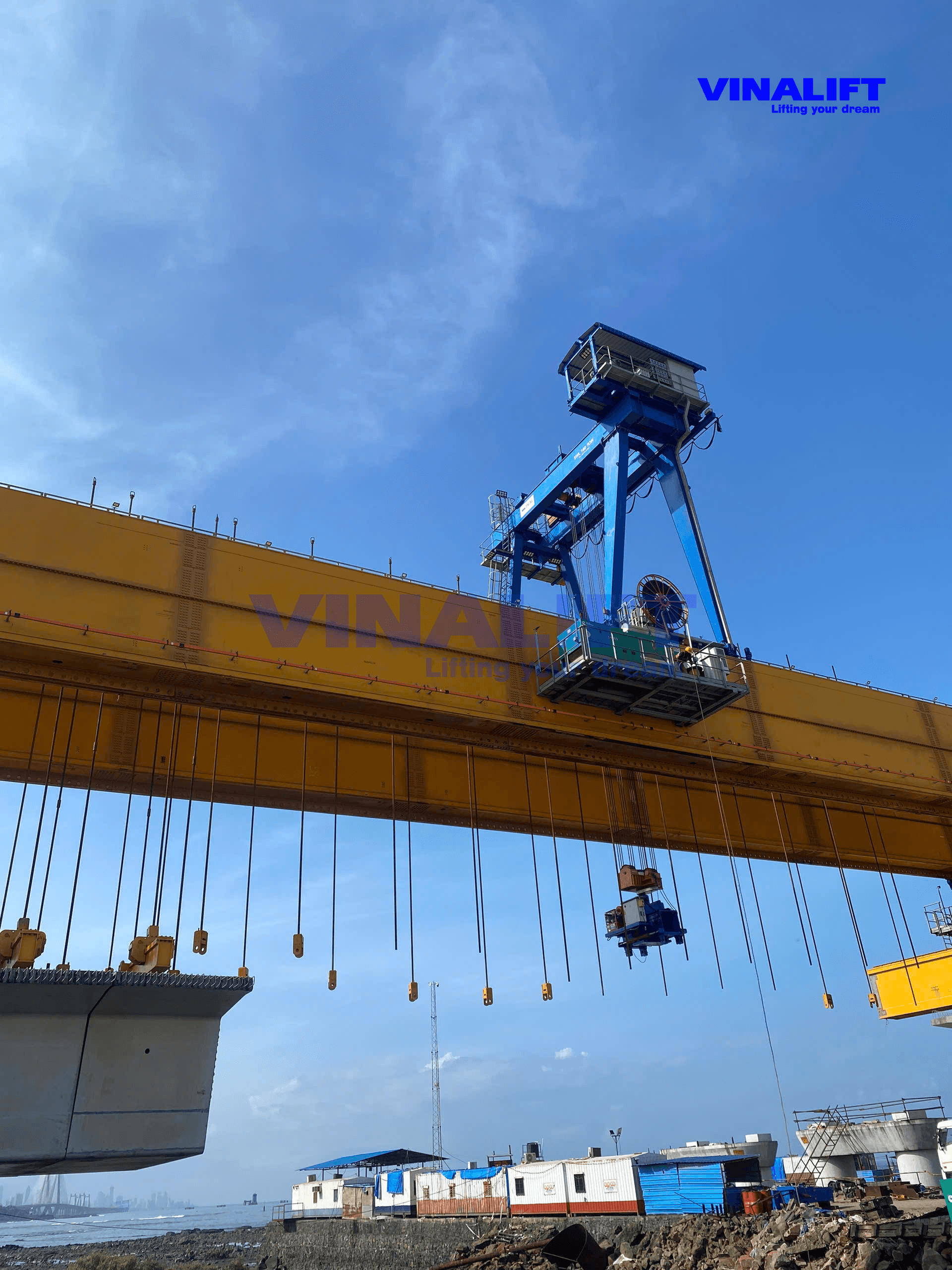
The Equipment will be designed according to the following codes:
- Steel structure and mechanism: FEM 1.001, 3rd Edition, 1998
- Electric plant: IEC 204-1, EN 60204-1 Safety of machinery – Electrical equipment of machines (400V, 50Hz)
- Raido control system: CEE 73/23, EMC 89/336 ECC and 83/392 ECC
- Safety: EN ISO 12100 Safety of machinery – general principles for design
Classification of the equipment (according to FEM)
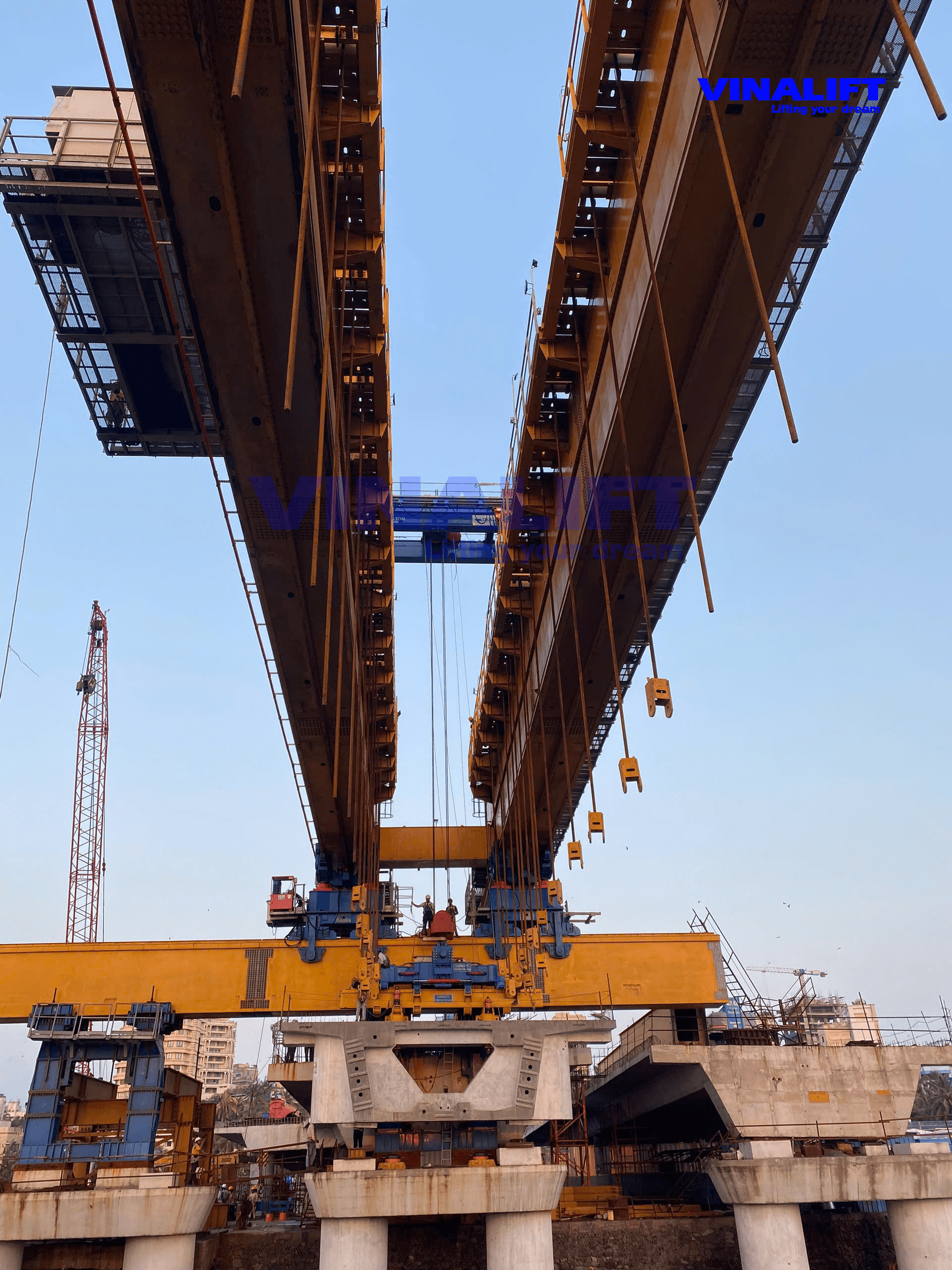
Main structure:
- Group classification: A2 (U1-Q3)
Main Winch group:
- Class of utilisation: T4 (Total duriation of use 1600<T<3200)
- Load spectrum: L3
- Group classification: 1 Am
Traveling group:
- Class of utilisation: T3 (Total duration of use 800<T<1600)
- Load spectrum: L3
- Group classification: M4
Wind speed limits
Wind speed limits for the design of the Winch Gantry are as follows:
- Working condition for equipment self-launching: 11,1 m/sec (40 km/h) (LC ||, FEM 1.001, 19998)
- Working condition for segment erection: 20,0 m/sec (72 km/h) (LC ||, FEM 1.001, 19998)
- Out of service (without segment): 35,0 m/sec (126 km/h) (LC ||, FEM 1.001, 19998)
Working temperatures, climate, altitude
Temperature: 0°C to 40°C
Installation: outdoor
Climate: Tropical, monsoon climate
Altitude: At sea level, seaside place installation
Thank you for reading this article. Please follow us on our WEBSITE or social media platforms such as FACEBOOK, TIKTOK LINKEDIN, and YOUTUBE for new articles with useful information.

